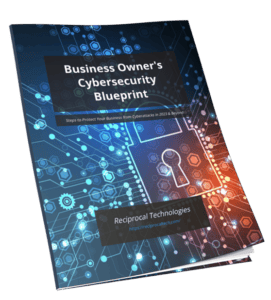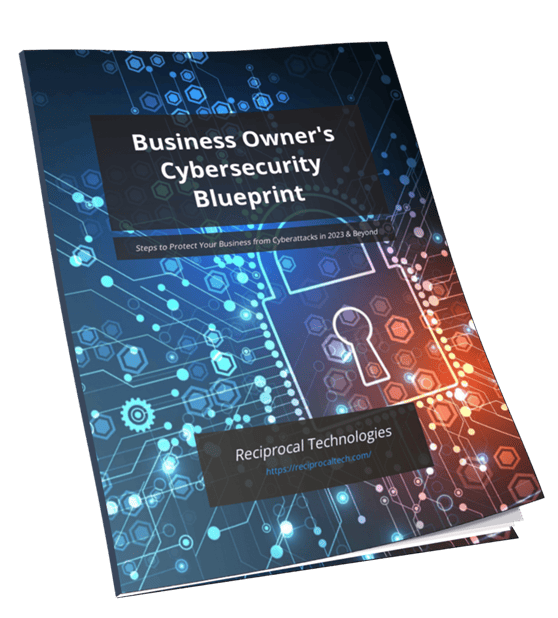Illuminating the Concept of the Dark Web

Let’s say, for a moment, that somewhere out there is a diligent employee—John—who works for a small business. While John means well, he has the unfortunate habit of using the same password for everything… including the marketing tool his employer has him sign up to use.
A year or two goes by. The company hasn’t touched that marketing tool in months. John has completely forgotten he has an account with it. Meanwhile, that tool experiences a significant data breach, and suddenly, the credentials to almost everything John has ever accessed are now available on the dark web.
Sounds pretty bad, right? Let’s talk about how this happens and how you can help keep it from impacting your business, as it would poor John’s.
What is the Dark Web, Anyways?
To understand the dark web, we need to understand how the Internet as a whole is built.
The Internet is Like the Icebergs that You See In Photos
What you consider “the Internet” can be classified into three (or two and a half, if you want to be technical) different parts:
- The first part is the surface web, which is everything you can access directly by a search engine without a login or payment. While this portion of the Internet may seem vast, it accounts for only about five to ten percent of the functional Internet.
- The second part is the deep web, which includes all the pages that cannot be searched for or require a login or payment to access, such as email inboxes or account pages on various websites, including internal company sites and private, protected pages. The deep web makes up anywhere from 90 to 95 percent of the Internet as a whole… just like the vast majority of an iceberg hides beneath the surface.
- The third (or, since it technically resides in the deep web, the second and a half) part is the dark web. Sites on the dark web are accessible only through a specific browser and built on anonymity, providing a place for various activities to take place. While many of these activities are illegal—sales of stolen materials, illicit services, and other contraband are common—the dark web is also a place where information can be shared without fear. While some of this information is stolen data, some of it is news being shared by activists, whistleblowers, and journalists who are unable to publish it along traditional means for various reasons.
This Anonymity-First Portion of the Internet is the Hacker’s Favorite Fence
So, instead of the trendy speakeasy where secrets are exchanged in dark corners, you can almost picture the dark web as a giant, silent auction.
Let’s return to our hypothetical friend John for a moment. As soon as his credentials were stolen in that marketing tool’s breach, they became part of a unique and frustrating supply chain. It basically plays out like this:
- John’s marketing tool is breached by a hacker, who takes millions of users’ credentials. This includes those belonging to our friend John.
- The hacker turns to the dark web and offers a cache of stolen user credentials in bulk, requesting payment in some form of cryptocurrency to maintain anonymity.
- Other cybercriminals on the dark web purchase the hacker’s collection and attempt to use the compiled credentials on various websites, from business to retail to social media.
So, in relatively few steps, John’s one stolen credential could suddenly open the door to the rest of his professional and personal life. You also need to remember that this credential might not have been stolen directly from John. If John uses the same credentials to log into a social media platform or other large business, any breach of these entities could easily have the same result.
Using this Data, Hackers Engage in Credential Stuffing
Credential stuffing is the cybercrime equivalent of throwing everything at a wall and seeing what sticks. By using automation, a cybercriminal in possession of one of these credential collections can input them into thousands of other websites, including email platforms, banking accounts, and business software such as customer relationship management platforms.
Many people—like our fictional example John—habitually repeat their passwords across different platforms and accounts, and this can ultimately lead to a breach of your business, even if you’ve done everything in your power to secure it. If your business’ information winds up on the dark web, your security will be about as effective as a tightrope made out of tissue paper.
So, what can be done?
Being Forewarned is Being Forearmed
Obviously, the ideal situation is not to have any of your passwords discovered in the first place. However, since you don’t have complete control over them, this is unfortunately impossible for you to ensure. The next best option is knowing that a username and password combination has been breached, so you can change it, mitigating the damage that a compromised set of credentials can cause. This is where our dark web monitoring services truly shine.
In simple terms, we have tools that allow us to scan the dark web for any sign of your company’s email domains. We’re then alerted if John’s (or another employee’s) credentials appear.
Keep in mind, this isn’t a way to recover your password. It’s simply a warning system to tell you that a password is no longer secure, so you can potentially change it before a cybercriminal uses it.
While the Dark Web Isn’t Inherently Bad, It Offers Nothing Good for Your Business
We can help you proactively monitor it to ensure your organization isn’t compromised by individuals using the dark web for scams and other cybercrimes. Learn more about our proactive monitoring by calling Reciprocal Technologies at 317-759-3972.
About the Author
Author’s recent posts
Download the
Business Owner’s Cybersecurity Blueprint


